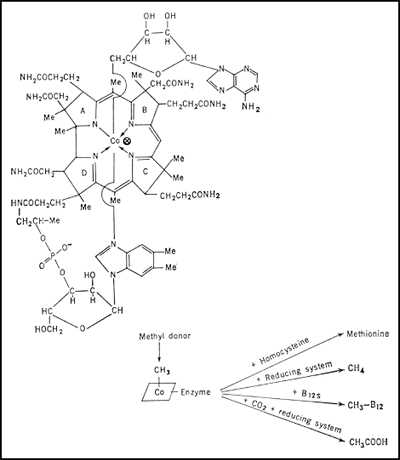Working on the aerobic degradation of cholesterol in the early 1950s, Thressa set out to produce precursors of steroid hormones and cortisone. Unfortunately, cholesterol was degraded completely by the microorganism, so she could not detect any of the desired intermediate products to be used for hormone production. In the course of this unsuccessful endeavor, however, Thressa was able to identify cholesterol oxidase, an enzyme that oxidizes cholesterol. This enzyme was later used clinically for the measurement of cholesterol levels in blood.
"When I was younger, I always worked in the laboratory on Saturdays and I added a few more samples in the experiments. I used to call these my Saturday specials. Sometimes there was an unexpected discovery that was more important than the original objective."
- –Thressa Stadtman
| Div | ||||||||||
|---|---|---|---|---|---|---|---|---|---|---|
| ||||||||||
|
In the late 1950s, by studying the formation of methane by Methanosarcina barkeri and other anaerobic bacteria, Thressa demonstrated that vitamin B12 is involved in the methane-producing process. Furthermore, she explained that the free form of vitamin B12 can function as a methyl group carrier, and that its coenzyme forms serve as hydrogen carriers. This knowledge provided the basis for much of the current understanding of methane biosynthesis. In 1958, another breakthrough in the study of vitamin B12 was made by Horace A. Barker, Thressa's mentor, who discovered the biologically active forms (coenzyme forms) of B12 vitamins while working on the anaerobic metabolism of glutamate. Coenzymes are non-protein molecules that help the catalytic function of enzymes. In the end, Thressa and her co-workers discovered 5 of the 12 known vitamin B12 -dependent enzymes, some of which, as coenzyme forms, function in lysine fermentation.



